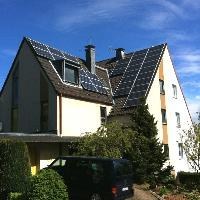(STRASBOURG) – MEPs set a goal of near zero-energy buildings in the EU by 2050 Tuesday as they gave final approval to the Energy Performance of Buildings directive for smarter and more energy efficient buildings.
The approval was welcomed by Commission vice-president for Energy Maros Sefcovic: “By renovating and making our buildings in Europe smarter, we are attaining several simultaneous objectives: lower energy bills, better health, protection of the environment and reduction of our emissions in the EU, given that over a third of these are produced by buildings,” he said. “And as technology has blurred the distinction between sectors, we are also establishing a link between buildings and e-mobility infrastructure, and helping stabilize the electricity grid. Another building block of the Energy Union has been laid today, let us continue ahead.”
Currently, buildings consume most energy in Europe, absorbing 40% of final energy. Approximately 1% of buildings are newly constructed each year, and three out of four European buildings are energy-inefficient. The construction industry generates about 9% of European GDP and accounts for 18 million jobs.
The changes agreed tap into the huge potential for efficiency gains in the building sector, the largest single energy consumer in Europe. They include measures that will accelerate the rate of building renovation towards more energy efficient systems and strengthen the energy performance of new buildings, making them smarter.
The updated legislation requires member states to develop national long-term strategies to support cost-saving renovation of public and private buildings, with a view to reducing emissions in the EU by 80-85% compared to 1990 levels.
These long-term goals to renovate the existing building stock ensure investment certainty and new financing tools for citizens and businesses, say MEPs.
The national strategies will provide roadmaps to a highly decarbonised national building stock by 2050, with indicative milestones for 2030 and 2040, and measurable progress indicators will have to be put in place to monitor the implementation of the national strategies.
The new directive will introduce electro-mobility requirements for new buildings and those undergoing major renovations, such as the location of at least one recharging point for electric vehicles in buildings with more than ten parking spaces. It will also require the installation of cabling infrastructure for recharging electric vehicles.
The text introduces the “smart readiness indicator”, a new tool to measure the ability of buildings to improve their operation and interaction with the grid, adapting energy consumption to the real needs of the occupant. The European Commission will have to develop this concept by the end of 2019.
New buildings and existing ones, where heat generators are replaced, must have automated devices to regulate temperature levels, while rules on inspection of heating and air conditioning systems and building automation were tightened up.
Once approved by the Council, the updated Energy Performance of Buildings Directive will be published in the EU Official Journal and will enter into force 20 days after publication. The transposition period for these new rules into national legislation is 20 months.
Further information, European Parliament


